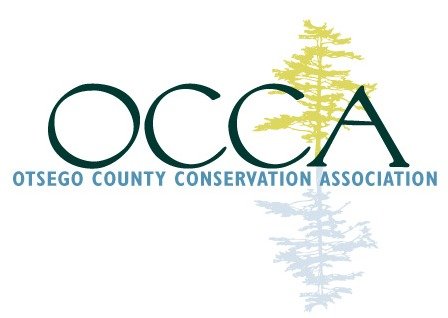Otsego County Conservation Association has been a leading agency in education and control efforts for invasive species.
Sign up below to help control invasive species in Otsego County. Volunteers are vital in OCCA’s ongoing management plan.
If you think you have found an invasive species on your property, contact Jeff O’Handley at programdirector@occainfo.org for help with ID and management.
-

Zebra Mussels
In summer 2007, Otsego Lake was invaded by the zebra mussel – whose ill effects include ecological destabilization, damage to municipal, residential, and commercial intake pipes, production of sharp shells causing injury to recreational users of the lake, and emission of unpleasant odors. Once established, elimination of this mollusk is impossible, making control the best option.
-

Water Chestnut
The water chestnut has a stem which extends to the surface of the water and ends in a rosette of floating, saw-toothed leaves. The plant bears a spiky fruit, which can pierce tennis shoes and thick-soled boots. In addition, water chestnuts can clog pipes, canals and waterways and adversely affect the environment by removing oxygen from the water and out competing native vegetation. OCCA has spearheaded a manual eradication effort of the water chestnut on Goodyear Lake.
Best Management Practices
The best way to deal with water chestnut is by hand pulling all visible plants, making sure to include the roots as well. This is best done before June when the plants begin flowering and producing nutlets. For large infestations, mechanical harvest is best. Nutlets can persist in the substrate for up to 5 years and can be transported by waterfowl and geese, so continued monitoring and periodic removals are necessary.
-

European Frog Bit
A free-floating plant of still and slow moving waters, European frog-bit can quickly form dense mats that block sunlight and alter aquatic ecosystems. European frog-bit can be recognized by its round or heart-shaped, leathery green leaves, which are just 1-2″ across. Rosettes of leaves arise from a node on an underwater runner called a stolon. Stolons can grow to several feet long and have multiple rosettes arising from them. In mid-summer, the plant produces small flowers with three white petals surrounding a yellow center. In late summer, the plant produces vegetative buds called turions that fall to the bottom and produce new plants the following year.
Best Management Practices
For more heavily infested water bodies it is suggested to harvest near launches to help prevent its spread. Herbicidal options are available, but the treatment of severe infestations is usually ineffective and expensive.
-
Yellow Floating Heart
The name of the yellow floating heart is deceivingly charming. It has round, floating yellow flowers that may look similar to heart shapes, and they can sometimes be mistaken for water lilies, another aquatic plant that bears flowers. The Yellow Floating Heart is a bottom-rooted, aquatic perennial that can place significant pressure on the ecosystems that it invades by crowding out indigenous plants and altering the chemical composition of the water. It can produce dense mats of leaves in the form of a floating canopy, which results in reduced flow, reduced light penetration, lower oxygen levels, and altered nutrient cycling of waterways. Yellow floating heart prefers slow-moving rivers, lakes, and reservoirs.
The Yellow Floating Heart, originally from parts of Europe and Asia, has spread to North America due to its visual appeal. However, its invasion can have serious consequences. The plant's dense mats can impede recreational activities such as swimming or boating, making it a significant concern for water enthusiasts.
-
Fishhook Water Flea
The fishhook water flea is an aggressive, predatory crustacean that gathers in large numbers. It can foul fishing lines, downrigger cables, and fishing nets. This flea feeds on smaller zooplankton, and its impact on ecosystems is not yet fully understood. The fishhook water flea and its relative, the spiny water flea, are easily spread through boats and fishing gear. They can reproduce asexually, allowing just a few individuals to quickly build a large population.
The fishhook water flea has a small, translucent body with black eyes. Its most distinguishing feature is its long, slender tail, which has three barbs and a characteristic S-shaped hook at the end. Clusters of fishhook water fleas can resemble wet cotton when seen on ropes or equipment.
The fishhook water flea was first discovered in the United States in Lake Ontario in 1998. Since then, it has spread to several inland lakes. Recently, it was found in the Pepacton Reservoir and has also been reported in various Finger Lakes.
Prevention Tip: Both the spiny water flea and the fishhook water flea can easily be transported on boats, fishing equipment, and bait wells. Always follow clean, drain, and treat (or dry) practices to help prevent their spread.


